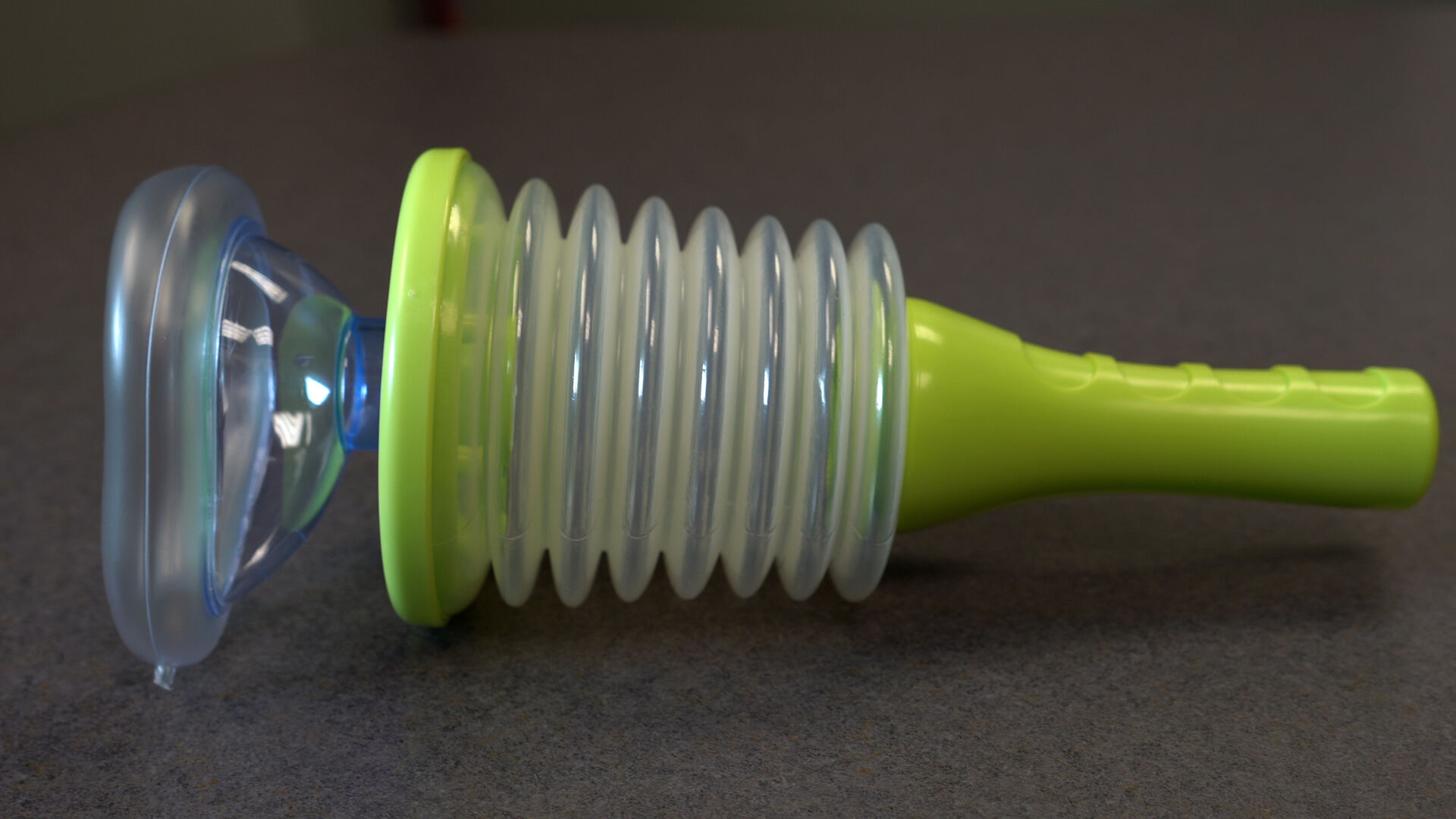SPOKANE, Wash. – It can happen in seconds and is known as a silent killer. Choking deaths happen mostly in small kids and seniors.
Choking is a top concern for infants and preschool-aged kids because of their tiny airways and kids’ tendency to put toys in their mouths.
Choking rescue devices are available online and promise life-saving results with an easy-to-use, lightweight design. The U.S. Food and Drug Administration (FDA) issued a warning about these devices, saying they should only be used after established choking rescue protocols have failed.
Dr. Sarah d’Hulst, MD, a board-certified pediatrician at MultiCare Rockwood Pediatrics in Spokane, echoed that warning to parents who are considering adding one of these devices to a first aid kit.
“The risk is, if something sticks with that valve you can actually push the object further into the airway and make it more difficult to remove,” Dr. d’Hulst said.
Choking is not the same as gagging or coughing; if the airway is truly blocked, there may only be a high-pitched squeaking noise or no sound at all.
As soon as someone chokes, Dr. d’Hulst says there are only a few minutes to prevent serious injury or death. The time it takes to find the device and assemble it shaves off valuable seconds in an emergency response.
“You are delaying what we know is the first line if you are using these devices first,” Dr. d’Hulst said.
The first line of defense should be calling 911. Then performing back blows on an infant, and abdominal thrusts on a child older than one. Those repeated physical responses should cause enough vibrations in the choking child’s airway to dislodge the object.
If the child loses consciousness, CPR is needed. That is the only time Dr. d’Hulst recommends a choking rescue device.
“It is that last-ditch effort,” Dr. d’Hulst said.
COPYRIGHT 2025 BY KXLY. ALL RIGHTS RESERVED. THIS MATERIAL MAY NOT BE PUBLISHED, BROADCAST, REWRITTEN OR REDISTRIBUTED.
